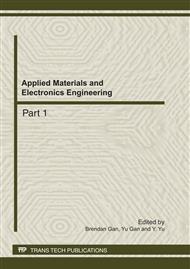p.744
p.748
p.752
p.759
p.763
p.767
p.775
p.780
p.785
Defect Characterization Using Random Telegraph Noise in GaN-Based Light-Emitting Diodes
Abstract:
In order to investigate the influence of the traps which exist in the multi-quantum-well (MQW) of GaN-based light-emitting diodes (LEDs), we analyzed the output current fluctuation known as random telegraph noise (RTN) at reverse-biased region. We could find the two-level current fluctuations at two samples (S1, S2) and the low-level average time (τlow) is larger than the high-level average time (τhigh) at both samples, which means that the energy level of the trap is located below the mid-gap of used material. With increasing a reverse bias voltage, in case of S1, τhigh becomes higher and τlow becomes lower as the energy level of the trap becomes relatively higher in reference to quasi Fermi level, EFn. On the contrary, the τhigh becomes lower and the τlow becomes higher at S2 as the energy level of the trap becomes relatively lower in reference to quasi Fermi level, EFp.
Info:
Periodical:
Pages:
763-766
Citation:
Online since:
October 2011
Authors:
Price:
Сopyright:
© 2012 Trans Tech Publications Ltd. All Rights Reserved
Share:
Citation:


